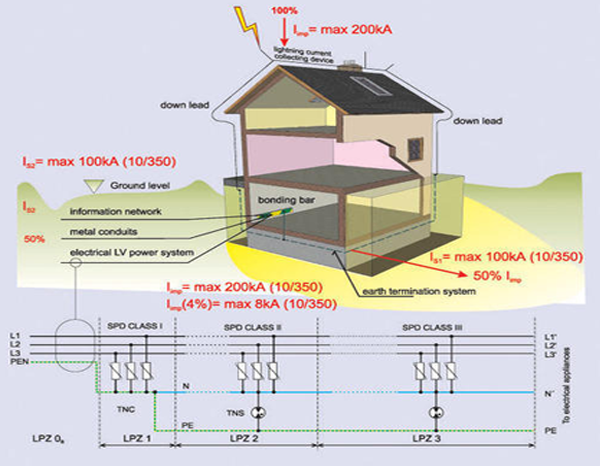
Surge Protection Device - Surge Protector
Surge protection device (SPD) - a device that is intended to limit transient overvoltages and divert surge currents; it contains at least one nonlinear component.
One port SPD - an SPD connected in shunt with the circuit to be protected; a one-port device may have separate input and output terminals without a specific series impedance between these terminals.
Two port SPD - an SPD with two sets of terminals, input and output; a specific series impedance is inserted between these terminals.
Voltage switching type - an SPD that has a high impedance when no surge is present, but can have a sudden change in impedance to a low value in response to a voltage surge; common examples of components used as voltage switching devices are spark gaps, gas tubes, thyristors (silicon-controlled rectifiers) and triacs; these SPDs are sometimes called „crowbar types“.
Voltage limiting type SPD - an SPD that has a high impedance when no surge is present, but will reduce it continuously with increased surge current and voltage; common examples of components used as nonlinear devices are varistors and suppressor diodes; these SPDs are sometimes called "clamping type“.
Combination type SPD - an SPD that incorporates both voltage switching type components and voltage limiting type components may exhibit voltage switching, voltage limiting or both voltage switching and voltage limiting behaviour depending upon the characteristics of the applied voltage.
Modes of protection - an SPDs protective component may be connected line-to-line or line-to-earth or line-to-neutral or neutral-to-earth and combination there of; these paths are referred to as modes of protection.
Sparkover voltage of a voltage switching SPD - maximum voltage value before disruptive discharge between the electrodes of the gap of a SPD; it is used for classification of the SPD class I and II by testing impulse with waveshape 1.2/50μs.
Additional Information:
- Item Code: SPD
Callback
